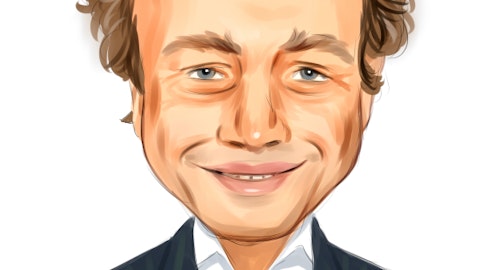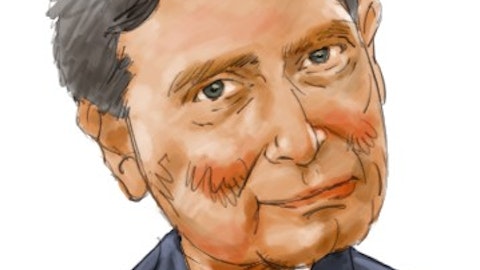If you play with the math, that means total top funnel advertising for manufacturers is down 64% when you include the decline in advertising plus the mix change. And for retailers, it’s down 44%. That is an enormous amount of advertising dollars taken off the top of the funnel. And I think that’s the big problem in traffic. I think that’s actually the bigger issue than share of wallet and other things that people like to talk about. Now from our standpoint, we continue to support the industry as a manufacturer and in our advertising expense we have not cut. So with us not cutting, you can see the other ad manufacturers are clearly not helping pull the funnel forward. We have moved some to the bottom of the funnel and we’re looking at that. And what we’re doing to help kind of get the industry back on track is we’re working with other retailers and major retailers, walking them through some of this analysis, talking to them about it.
And it’s resonating with them. And some of the large retailers are really looking at their advertising mix in dollar amount.
Operator: Thank you. One moment for your next question. And next question comes from the line of Peter Keith with Piper Sandler. Your line is now open. Peter, your line is now open.
Peter Keith: Sorry about that. Good morning, everyone. It’s a really nice gross margin — really nice gross margin expansion. I think the surprise to me and I think from others was the growth in SG&A and you did reference that you’re making some growth investments. So could you unpack a little bit what changed with Q3, did anything accelerate and maybe detail what some of these growth investments are?
Bhaskar Rao: Absolutely, so one of the important things that Scott mentioned is, is that we want to continue to support our brands and products. So we continue to advertise and what we believe is that that advertising is showing itself and that we continue to outperform the market and capture share. So a piece of that is going to be advertising. What I would further say is that we remained very positive and constructive on our own door, specifically our temporary retail store strategy. And as you can imagine, those are very unique type of shopping experiences that have unique locations, very long tail on those. So those, we’ve identified those opportunities. So as you think about the investments in those stores, that’s what’s flowing through selling and marketing as well.
Outside of that and as we think about those things, if those things are going to continue to pay dividends as you think about growth in the out years, we’re going to continue to invest in future growth.
Scott L. Thompson: Yes, I mean, that’s consistent with what we said, we did not pull back what I’d call short-term things to worry about, quarter earnings. When we look at the market share gains we’re getting and what we’re doing as far as strengthening our competitive position, we felt like those investments we should continue to make them and they are advertising and there are some new stores in Tempur and those takes some startup costs and stuff. But we stayed on track with our growth plan.
Operator: Thank you. One moment for our next question. And next question comes from the line of Bobby Griffin with Raymond James. Your line is now open.
Bobby Griffin: Good morning, buddy. Thanks for taking my questions. Bhaskar, clearly a very dynamic market here and not asking really for 2024 for guidance, we all make our own predictions. But when you look at this year and you kind of look at how it played out, can you maybe highlight a few of the aspects that might not repeat from a cost standpoint in 2024 that we should keep in mind. And then on the other side is there things coming in 2024 that we should also model and that maybe didn’t occur this year from a product investment standpoint or anything about that, just to help us think about the flow in and flow out of costs and expenses next year?



